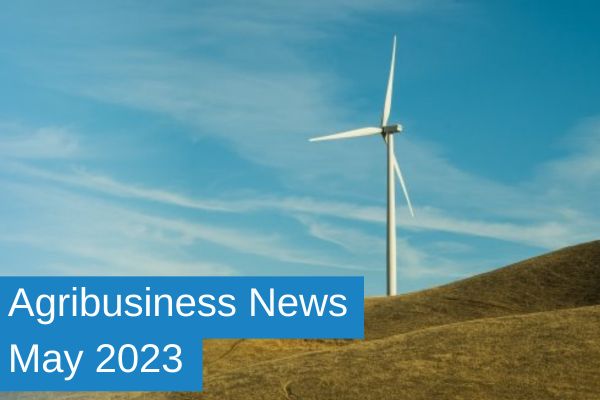Agribusiness News May 2023 – Becoming Energy Self-Sufficient
1 May 2023The Energy Crisis
Energy price hikes, insecurity in global energy markets and a desire to be sustainable have resulted in many farmers looking at options to be more energy self-sufficient. Wholesale energy prices have fallen from their peak in 2022 but farm bills remain stubbornly high. Matching renewables to meet onsite demand can offset these costs and potentially generate additional income streams. These inflated energy prices can also help significantly lower the payback periods.
Renewables After Incentives
Ideal renewable sites should be high yielding with low construction and connection costs. Viable farm scale projects will meet as much onsite demand as possible to help offsets expensive energy bills.
Depending on the development, additional income options might include leasing land for large-scale wind and solar, power purchase agreements (PPA) or selling surplus electricity to the grid. Smart export guarantee (SEG) payments are often lower than the purchased price of electricity, so using the generated power to first offset bills is usually the best option.
There are some funding and support options available. Business Energy Scotland offer a SME Loan of up to £100,000 interest free, plus cashback grants for various renewable heat and energy efficiency measures. Home Energy Scotland can provide support for domestic properties and banks and financial institutions often offer favourable rates for green projects.
Farm Scale Options
It is important to assess your farm energy demand and discover what technology options would best suit your business. Firstly, improving energy efficiency and making best use of your existing systems and grid connection saves money and ensures you are investing in the right type and scale of technology.
Renewable costs are site specific and vary significantly depending on the type and scale of technology. Grid connection may be a limiting factor due to constraints across large parts of the network. Therefore, if you are exporting to the grid, it is imperative to speak to the network operator at an early stage to understand connection options and costs. Connections below 50kW (on a three phase site) are generally more straightforward and lower cost.
Depending on your site specifics, various forms of technology may be suitable. For example:
- Solar PV
Often the most straightforward option. Small to medium scale roof mounted schemes usually classify as a permitted development and make good use of existing vacant roof space. Shed roofs should be structurally sound, south facing, and unobstructed.
- Wind
One of the most common and well established renewables but getting planning consent may be contentious. The land around turbines can still be used for agricultural purposes.
- Hydro
Small scale, run of river schemes work well, but need a high head, plenty rainfall, and a suitable catchment area to provide a good yield. Gaining consent can be difficult and environmental impacts need careful consideration.
- Biomass
Biomass can help to meet your heat demands and offset fossil fuel use. However, fuel costs need taken into consideration and current high prices, especially for processed fuel such as pellets, mean that it needs careful consideration to balance any savings with high capital costs.
- Heat pumps
Heat pumps still require electricity to operate, but less than would be required for direct electric heating. Ground or water source are more efficient than air source. They can be retrofitted to existing buildings and can also contribute to cooling requirements if you have cold stores.
- Energy Storage
Storage options have become more viable at the farm scale due to high electricity prices. Storing your own renewables if you have a poor export contract or additional income from emerging grid balancing services may provide opportunities. Potential storage options can include lead-acid, lithium, or flow batteries, which all have different costs, lifespans, and applications. Green hydrogen created from renewable electricity is another potential way of storing large amounts of energy for multiple uses.
Exploring your options can provide energy security, generate economic benefits, and offer green marketing opportunities for farming.
iain.boyd@sac.co.uk, 0131 603 7527
Sign up to the FAS newsletter
Receive updates on news, events and publications from Scotland’s Farm Advisory Service

